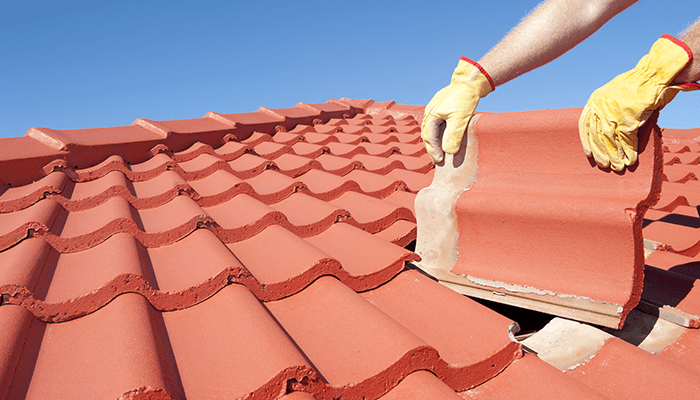Residential Roofing Tips

Return the favor by spending a few moments on preventative roof maintenance twice a year—once in the spring and once in the fall. Negligence can lead to expensive repairs, so be sure to follow Inspect-It 1st’s residential roofing tips to keep yours in tip-top shape.
First Things First
Before you begin to examine the state of your roof, check your homeowners’ insurance manual to see if your policy covers serious roof damage. If it doesn’t, you’ll know you have to take precautionary measures seriously; or you might decide to switch to a plan that offers residential roof coverage.
Next, determine what material your roof is made of. The most common roofing materials include:
- Asphalt Shingles
- Clay or Concrete Tiles
- Slate
- Wood Shingles
- Metal
Each material is unique, and thus, will have unique maintenance problems. Material durability differs greatly and its life cycle should be taken into consideration. Asphalt shingles are quite economical but only last about 20-25 years, while the lifespan of a slate roof can be more than 100 years.
What to Look for
To conduct a roof inspection, you’ll want to work your way around your house. Start on the ground and note potential problems from there, then use a ladder to examine the issue further. Some problems may require you to physically be on the roof to fix, but it’s best for your roof—and your safety—to spend as little time as possible on top of your house. When inspecting the roof from the exterior, look for the following:
- Broken, buckling or curling shingles
- Patches of moss and lichen
- Missing shingles
- Cracked caulking
- Rusting flashing
- Sand-like granules in gutters
- Peeling paint underneath roof overhangs
Early signs of trouble that you can detect inside your home include:
- Damp sections around fireplaces
- Dark patches on ceilings
- Water stains
Depending on the scope of damage, you may be able to do some repairs yourself. Things like resealing the roof’s flashing with caulk, replacing shingles or moss eradication can be done in a day’s time. Bigger issues, like rusted out vent boots or large areas of damaged roofing, may require a professional roofer.
It’s also smart to call in a professional inspection service, like Inspect-It 1st, if a heavy storm or natural disaster hits your neighborhood. Experienced, certified inspectors will be able to assess the situation in full and advise on repairs.
Expert Residential Roofing Tips
- Inspect your roof when you’re cleaning your gutters; you’ll be able to kill two birds with one stone and you’ll be more likely to remember to do it.
- If you’re afraid of heights and/or ladders, you can use binoculars to check your roof from the ground but you’ll want to hire an inspection service, like Inspect-It 1st, at least once a year to get up close and personal with your roof.
- Trim the low-hanging branches of trees that surround your house to prevent them from causing damage to your roof shingles.
- Be sure to check your states’ building and standards code to make sure your roof’s specifications abide by the rules. Codes are frequently updated, and failure to comply could result in a citation. The International Building Code is a good place to start, which encompasses regulations on everything from the slope of the roof to energy conservation.
If you’re in need of a residential roofing inspection or any other kind inspection, consider Inspect-It 1st. Inspect-It 1st can group your inspection needs together for both the home’s interior and exterior, to save you time and money. Find an Inspect-It 1st location near you.
